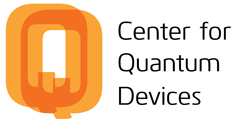Qdev seminar by Alexander Khajetoorians, Radboud University, Nijmegen, Holland
2D superconductivity in thin metallic films: the superconductor, its interface, and an application to YSR states
Understanding the role of dimensionality is pivotal for the development of superconducting quantum technologies, ranging from sensing, toward computing concepts.
For a vast range of superconductors, it has been shown that superconductivity can survive down to the limit of a monolayer, when compared to the bulk. In few examples, exemplified by FeSe, superconductivity can be brilliantly enhanced down to the monolayer limit.
Yet, the understanding of such phenomena, and the interplay between dimensionality, electronic structure, and various other environmental factors, like dielectric screening, is extremely challenging due to the complex nature of superconductivity itself in these systems.
Toward this end, elemental superconductors provide a fascinating playground to study 2D superconductivity, as their bulk counterparts are well understood within conventional theories of superconductivity. Here, I will discuss three experimental findings: 1) the enhancement of superconductivity in thin epitaxial aluminum films and the role of odd frequency pairing, 2) hybrid superconductivity formed at the interface between semiconductors and superconductors, 3) YSR states in magnetic fields, for 2D superconductors. These experiments are based on using scanning tunneling microscopy and spectroscopy, down to the milliKelvin and in variable magnetic field.

